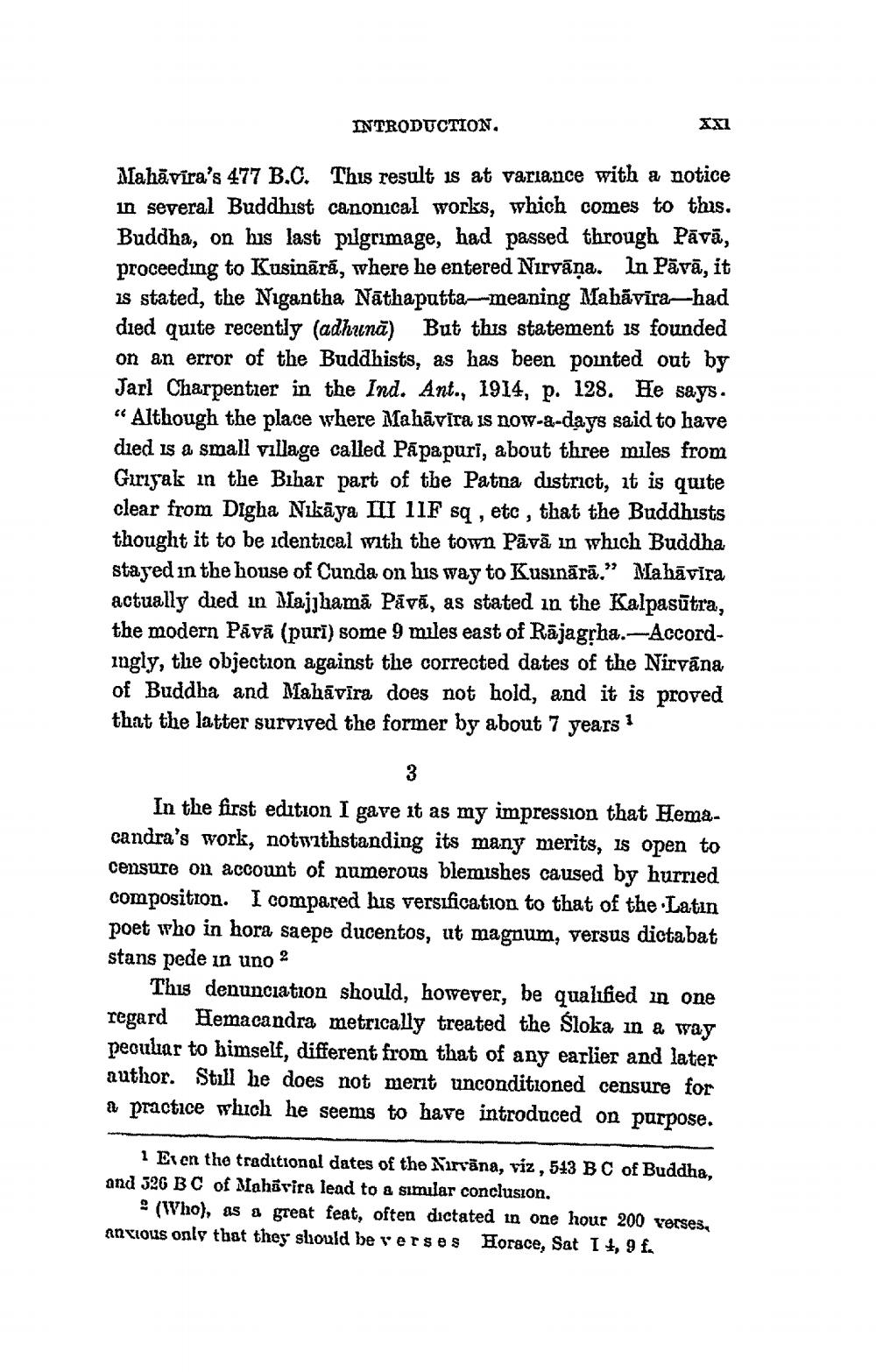________________
INTRODUCTION.
XX
*
Mahavira's 477 B.C. This result is at variance with a notice in several Buddhist canonical works, which comes to this. Buddha, on his last pilgrimage, had passed through Pāvā, proceeding to Kusinara, where he entered Nirvana. ln Pāvā, it is stated, the Nigantha Nathaputta-meaning Mahāvīra—had died quite recently (adhuna) But this statement is founded on an error of the Buddhists, as has been pointed out by Jarl Charpentier in the Ind. Ant., 1914, p. 128. He says. Although the place where Mahavira is now-a-days said to have died is a small village called Papapuri, about three miles from Gırıyak in the Bihar part of the Patna district, it is quite clear from Digha Nikaya III 11F sq, etc, that the Buddhists thought it to be identical with the town Pava in which Buddha stayed in the house of Cunda on his way to Kusinārā." Mahāvira actually died in Majjhamā Pāvā, as stated in the Kalpasūtra, the modern Pāvā (puri) some 9 miles east of Rajagṛha.-Accordingly, the objection against the corrected dates of the Nirvana of Buddha and Mahavira does not hold, and it is proved that the latter survived the former by about 7 years 1
3
In the first edition I gave it as my impression that Hemacandra's work, notwithstanding its many merits, is open to censure on account of numerous blemishes caused by hurried composition. I compared his versification to that of the Latin poet who in hora saepe ducentos, ut magnum, versus dictabat stans pede in uno 2
This denunciation should, however, be qualified in one regard Hemacandra metrically treated the Śloka in a way peculiar to himself, different from that of any earlier and later author. Still he does not merit unconditioned censure for a practice which he seems to have introduced on purpose.
1 Even the traditional dates of the Nirvana, víz, 543 BC of Buddha, and 326 BC of Mahavira lead to a similar conclusion.
(Who), as a great feat, often dictated in one hour 200 verses, anxious only that they should be verses Horace, Sat I 4, 9 f




